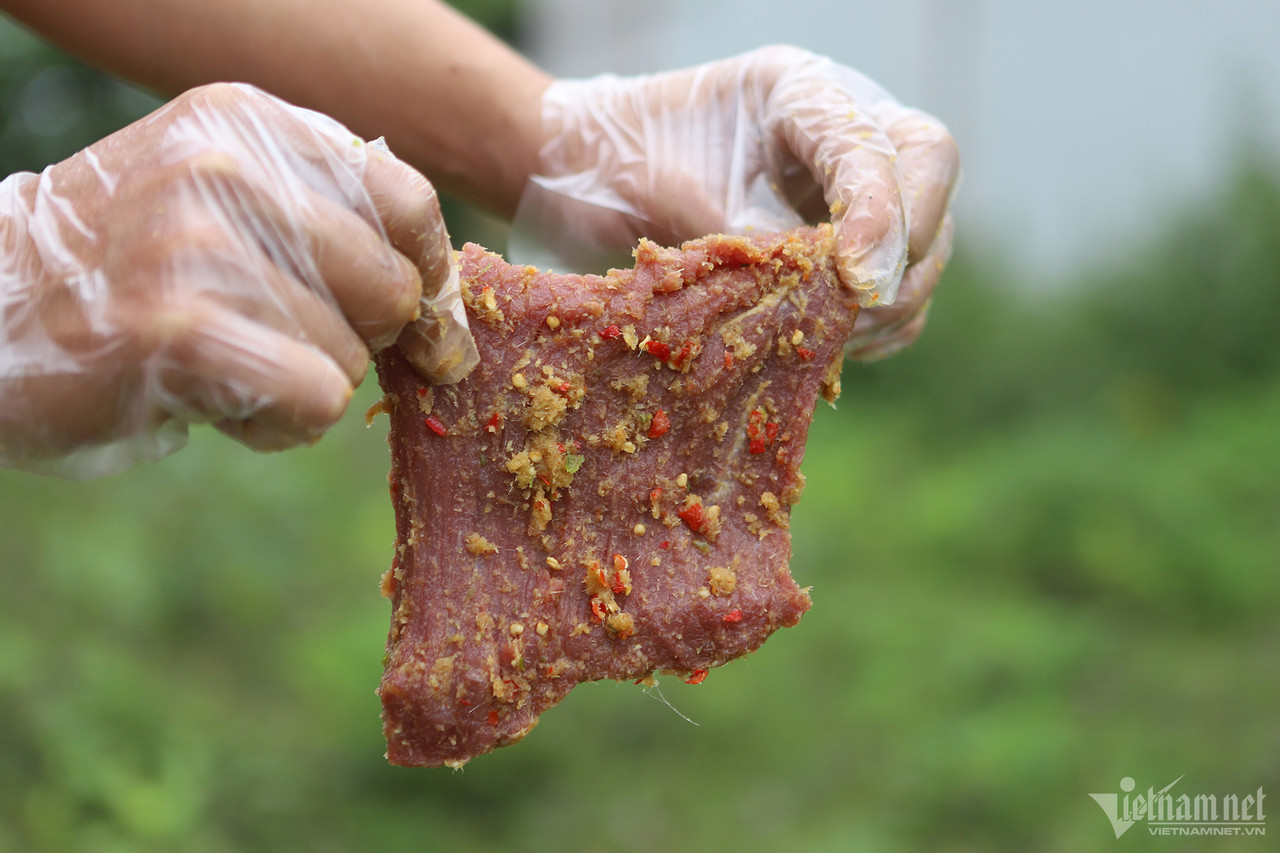
From taxi driver to half-dried beef producer
In mid-January, Nguyen Dinh Hoi, 35, was seen cutting up beef together with his co-workers at his private workshop in Hai Rieng Town of Song Hinh in neighboring Dak Lak province.
There were nearly 10 workers at his workshop with monthly pay of VND5-10 million a month.
Hoi was busy these days as he had taken thousands of orders for half-dried beef and ant salt, twice as much as orders on ordinary days.
Hoi was a taxi driver, which allowed him to travel throughout the country and gave him opportunities to taste many local specialties. One day, he realized that grass-fed cows grazing naturally on local green fields give high-quality meat. This prompted him to start a business making half-dried beef, with the brand ‘Buon Hai Rieng’.
Hoi said it is not too complicated to make half-dried beef. However, Hoi had a number of failures before he found an optimal recipe. Using fresh and high-quality beef is the most important requirement.
The beef needs to be sliced and marinated with natural spices such as fresh lemongrass, minced chili along and local spices for 3-4 hours. And then, it is exposed to strong sunshine for 5-6 hours.
If the weather is unfavorable, the beef will be put into a drier at the temperature of 35-40oC for 4-5 hours.
His workshop covers thousands of square meters, with equipment worth nearly VND1 billion.
Hoi said drying under natural sun or in a drier is an important stage of the meat processing, creating an attractive dark brown color. After that, the beef is put into vacuum bags to ensure hygiene.
The specialty is used with ant salt to have the best taste. Half-dried beef tastes like jerky, but it is more tender and delicious.
Hoi said his workshop provides 1-2 tons a month sold through different channels, both offline and online. The output is much higher on days just before Tet, about 4 tons. It is sold at VND550,000-600,000 per kilogram, depending on transport costs.
Tran Thi Thu Nguyet, 51, sitting near Hoi in the workshop, was seen meticulously working with a tray of ants. The ants are collected from the wild and cleaned. Later, salt, chili and special spices of Hai Rieng area are added to the ant tray and mixed to process a kind of spice for half-dried beef.
Nguyet, who has many years of experience in making half-dried beef, said clean food and spices are the two ‘know-hows’ in making the product. It is also important to marinate beef with reasonable volume of spices. She changes the formula a bit if she receives feedback from customers.
“We are very busy on pre-Tet days as orders come in at a rapid-fire pace,” Nguyet said.
Ly Thi Thu Hang, head of the Song Hinh district Agriculture Sub-department, said the climate and weather conditions in the locality are favorable for grazing grass-fed cows – the input material for half-dried beef. There are over 18,000 cow breeders in communes.
The supply of input materials gives an advantage to locals to make half-dried beef, bringing economic benefits and generating jobs.
Phu Yen’s half-dried beef has become a well known brand. The local authorities have policies to help beef production workshops join the OCOP program (one commune, one product).
District authorities are encouraging half-dried beef workshops to expand production scale and improve quality to be able to access clients via supermarkets and safe-food shops nationwide. The products are also introduced to visitors and travelers.
Families gather in cold winter days and taste slices of half-dried beef with compatible drinks. The beef tastes best and has a special smell when it is used with ant salt.
Phan Dau